如果有一个真正完成的并且并上网的太阳能项目,试想,在经历20年的运作又没有一点保养将会是怎样?因此,组件清洗已经成长为一个庞大的商业和不应该被遗忘的重要环节。正如业主已经认识到新技术进入组件清洁市场的重要性,无接触机器人提供了一种替代人工清洗,现在一些技巧避水完全。双方说,他们比其他手工清洗更可能是更精确的质量更高,同时自动/机器人清洗可能会更快,并且可以更频繁地计划。什么方法为你的系统效果最好?
手工清洗
精英模块洗涤,根据出朗蒙特,科罗拉多州,是一个手动面板清洗队伍,动员在美国和国外几乎所有的位置。而不是让精英子公司在各个城市,CEO布莱恩Dirkes说有一支球队让他确保每个人都是合格的,适当的培训。
“我们每个人都雇用本地这里走出科罗拉多,我们前往与我们设定船员的网站,”他说。 “每个人都知道自己的工作,每个人都知道他们在做什么。没有任何训练的每一天,或担心,如果某某所以能做到这一点。“
精英的作品主要是在公用事业规模的网站,通常不会采取一个新的客户,除非它至少40000面板。合约是基于如何脏的地理区域是干旱和农业区往往比其他脏和需要更频繁的清洗。通常情况下,立夏是精英最繁忙的时间,因为很多客户都希望面板在太阳能赛季的高度清洁,以获得最大的产出。
精英只使用水和软毛刷来清洁面板。通过当地的水进行连接,船员过滤的水,以确保它在0 TDS(总溶解固体)。 Dirkes说,即使是可生物降解的肥皂,量你需要清洁1万片的大型实用工具网站太多舒适与浸泡到地面。水做了伟大的工作,一个人。
“玻璃已经是多孔的本质。它有一点草皮你不能用你的肉眼看,“他说。 “如果使用刮刀为此事任何形式的肥皂或者它最终将会填补这些毛孔,你会得到污垢,皂颗粒,任何东西卡住了。您的玻璃最终将烟霞时间。“
精英喜欢刷过刮刀,因为它们也有助于框架周围清晰的泥流。
“我们刷的帧之间取得了一点。很多使用刮刀没有这种能力的公司,“他说。 “他们拉了下来刮刀,它crams污垢到该下轨。如果它发生翻转到另一侧上的单轴跟踪器和下雨,则所有的泥浆和污垢只是要被灌进该面板的顶部。它完全击败了清洗的目的。刷子推助的东西离开那里和漂洗彻底敲它关闭。“
而精英接触的业主通知后产量下滑,Dirkes说,大多数企业出现在最初的概算项目甚至建立之前。该公司目前正在竞标,将不会开始建设一两年的项目。这证明,每个人都更认真地对待面板清洗。
“我们一直在提高我们的设备和我们的程序。通过这样做,只能让我们变得更好,更快,“Dirkes说。 “我们将继续努力朝着什么我们可以做些什么来加快这一进程或降低的东西作为模块清洗一样重要的价格。”
自动清洗
Heliotex已生产自动清洗系统,自2008年以来,并在全球范围内安装的,但集中在加州和亚利桑那州。有没有移动部件或机械手元件;该Heliotex系统看起来像洒水,用喷嘴位置每隔几板。该系统运行一洗(肥皂)周期和冲洗循环,可调节频率。没有工具的使用,和面板都只是通过重力清洗。
虽然该公司提出了一个一分钟的洗涤和每周漂洗循环一次,一些安装区域可能需要更多。走旁边的水泥制造商的屋顶太阳能系统。该常量的尘埃云应每周清洗(如果不是每天)。 Heliotex业主基因亨特的座右铭是“清洁它变脏之前。”
“每一天,你不清洗面板,它会很脏,”他说。 “有两件事与清洗:必须使用干净的水,不要让面板弄脏。一旦他们是肮脏的,这是很难弄干净。“
这就是为什么Heliotex劝说客户远离人工清洗,每年一次或两次。与Heliotex系统,每周一个快速和自动喷雾提升产量。
“我们的系统提供了机会,每天保持你的面板干净,不只是二至四天一年,”亨特说。
该系统工作在过夜小时至1)不与电力生产白天干扰,2)防止损坏面板(你不想洒水热玻璃在高中午)和3)避免肥皂和水干燥过早。 Heliotex有它自己的肥皂浓缩物用于在洗涤周期中使用该亨特所述符合所有的EPA和条件是可生物降解的,甚至随着时间的推移而继续使用。
洗涤和漂洗周期并不总是必须在连续运行。亨特说,尽管洗涤不具有每周要做,漂洗更频繁并有助于保持干净的面板,而不必使用肥皂。
“该小组可能不会太肮脏,因此他们将在一个月清洗一次,但在两者之间只运行了水循环,”他说。 “这可以确保你不会面板上颗粒的积累。”
频繁冲洗带走鸟粪和其它杂物烘烤,真正需要一些苦劳去除的关注。
Heliotex其价格由系统平方尺不千瓦。最大的要求是获得水和水压。 Heliotex将安装各种管道,如有必要,以确保面板上的喷雾有效地清除它们泵。而不是每年的运维成本,该Heliotex系统可以在被当作补充安装的太阳能电池阵列,并采取各种退税的优势。 SPW
WATER-FREE竞争者
遭受旱灾的地区通常是那些最太阳能装置。那么,为什么不使用无水清洁系统?这里有两个机器人新鲜市场。
每天E4不含水,机器人从Ecoppia液清洗面板用柔软的超细纤维和温柔的空气流动。漂浮在一个帧移动板中的每一行旁边,Ecoppia声称E4去除99%的灰尘在其日常清洗。每个E4机器人有它自己的太阳能电池板,因此没有动力取自太阳能排它的清洁。总部设在以色列,Ecoppia以来形成于2013年,主要是在中东地区的尘土飞扬,沙漠地区清理超过510万片。
家用机器人创新Ecovacs机器人刚刚推出了RAYBOT,一个无水的太阳能电池板清洗机器人。小机器人抽吸到面板倾斜达55°,扫描,打击和真空灰尘和污垢。可拆卸电池,当电量耗尽容易更换。 Ecovacs目前正在进行最后的测试,在中国和美国加州的太阳能机器人,预计RAYBOT到今年晚些时候推出。
原文:
If only a solar project was truly finished once you hooked it up to the grid. We now know better than to expect an array to function at peak production for 20 years without a little upkeep. O&M has grown into a huge business, and module washing is an important segment that shouldn’t be forgotten. Just as quickly as system owners have recognized a need for panel cleaning, new technologies have entered the market. No-touch robots offer an alternative to manual washing, and now some techniques avoid water altogether. Both sides say they’re better than the other—manual washing may be more precise and of a higher quality while automatic/robotic cleaning might be quicker and can be scheduled more frequently. What method works best for your system?
Manual Washing
Elite Module Washing, based out of Longmont, Colo., is a manual panel washing team that mobilizes to nearly any location in the United States and abroad. Rather than have Elite affiliates in various cities, CEO Bryan Dirkes said having one team allows him to make sure everyone is qualified and properly trained.
“We hire everyone locally here out of Colorado, and we travel to the sites with our set crews,” he said. “Everybody knows their job, everybody knows what they’re doing. There isn’t any training each day or worrying about if so-and-so can do this.”

Elite works mostly on utility-scale sites and usually won’t take on a new customer unless it’s at least 40,000 panels. Contracts are based on how dirty the geographic region is—arid and agricultural areas tend to be dirtier than others and require more frequent cleanings. Often, the beginning of summer is Elite’s busiest time because a lot of customers want panels cleaned at the height of the solar season to get maximum output.
Elite only uses water and a soft bristled brush to clean panels. Through local water hookups, the crew filters the water to make sure it’s at 0 TDS (total dissolved solids). Dirkes said that even though there are biodegradable soaps, the amount you would need to clean a large utility site with 1 million panels is too much to be comfortable with soaking into the ground. Water does a great job alone.
“Glass is already porous by nature. It has little divots you can’t see with your naked eye,” he said. “If you use any sort of soap or a squeegee for that matter, it’s going to end up filling those pores and you’ll get dirt, soap particles, anything stuck. Your glass is eventually going to haze over time.”
Elite prefers brushes over squeegees because they also help to clear gunk around the frame.

“Our brushes get in between the frames a bit. A lot of companies that use squeegees don’t have that capability,” he said. “They pull that squeegee down and it crams that dirt into that bottom rail. If it happens to flip to the other side on a single-axis tracker and it rains, then all that mud and grime is just going to be coming down the top of that panel. It totally defeated the purpose of cleaning. The brushes help push that stuff out of there and a rinse knocks it off completely.”
While Elite is contacted after owners notice production has slipped, Dirkes said most business comes during initial budget proposals before projects are even built. The company is currently bidding on projects that won’t begin construction for another year or two. This proves that everyone is taking panel washing more seriously.
“We’re always improving on our equipment and our procedures. By doing that, it can only make us better and faster,” Dirkes said. “We’re continuing to strive toward anything we can do to speed up the process or lower the price on something as vital as module washing.”
Automatic Cleaning
Heliotex has been manufacturing automatic cleaning systems since 2008 and has installations worldwide but focuses on California and Arizona. There are no moving parts or robotic elements; the Heliotex system looks like a sprinkler, with nozzles positioned every few panels. The system runs a wash (with soap) cycle and a rinse cycle, with adjustable frequency. No tools are used, and panels are cleaned just by gravity.

While the company suggests a one-minute wash and rinse cycle once a week, some installation areas may need more. Take a rooftop solar system next to a cement manufacturer. That constant cloud of dust should be cleaned weekly (if not daily). Heliotex owner Gene Hunt’s motto is to “clean it before it gets dirty.”
“Every day that you’re not cleaning the panels, it’s going to get dirtier,” he said. “There are two things with cleaning: You must use clean water, and don’t allow the panels to get dirty. Once they’re dirty, it’s harder to get clean.”
That’s why Heliotex persuades customers away from manual cleaning once or twice a year. With the Heliotex system, a quick and automatic spray on a weekly basis boosts production.
“Our system affords the opportunity to keep your panels clean every day, not just two to four days a year,” Hunt said.
The system operates in the overnight hours to 1) not interfere with the electricity-producing daytime, 2) prevent damage to the panels (you don’t want to spray water on hot glass at high noon) and 3) avoid soap and water drying prematurely. Heliotex has its own soap concentrate for use during the wash cycle that Hunt said complies with all EPA conditions and is biodegradable even over time and continual use.

Wash and rinse cycles do not always have to be run in succession. Hunt said that while washing doesn’t have to be done every week, rinsing more frequently does help keep panels clean without having to use the soap.
“The panels might not be too dirty so they’ll clean once a month but run just water cycles in between,” he said. “It ensures that you don’t get an accumulation of particulates on the panels.”
Frequent rinses takes away the concern of bird droppings and other debris baking on and really needing some elbow grease to remove.
Heliotex prices its systems by square-feet not kilowatts. The biggest requirement is access to water and water pressure. Heliotex will install various pipes and pumps if necessary to make sure the spray on the panels cleans them effectively. Rather than being an annual O&M cost, the Heliotex system can be looked at as a complementary installation to the solar array and take advantage of various tax rebates. SPW
WATER-FREE CONTENDERS
Drought-stricken regions are usually the ones with the most solar installations. So why not use a waterless cleaning system? Here are two robots fresh to the market.
Ecoppia E4
Ecoppia’s E4
The E4 water-free, robotic solution from Ecoppia cleans panels every day with a soft microfiber and gentle air flow. Floating over a frame that travels alongside each row of panels, Ecoppia claims the E4 removes 99% of dust during its daily cleanings. Each E4 robot has its own solar panel, so no power is taken from the solar row it’s cleaning. Headquartered in Israel, Ecoppia has cleaned more than 5.1 million panels since forming in 2013, mostly in the dusty, desert regions of the Middle East.
Ecovacs Robotics RAYBOT
Ecovacs Robotics’ RAYBOT
Household robotic innovator Ecovacs Robotics just recently introduced the RAYBOT, a waterless solar panel cleaning robot. The small robot suctions to panels tilted up to 55° and sweeps, blows and vacuums dust and dirt. A detachable battery is easily replaced when power runs out. Ecovacs is currently conducting final tests for the solar robot in China and California and expects RAYBOT to launch later this year.

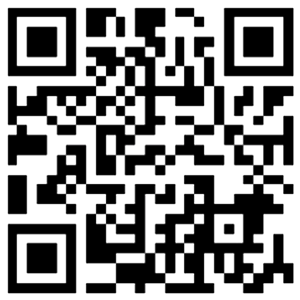
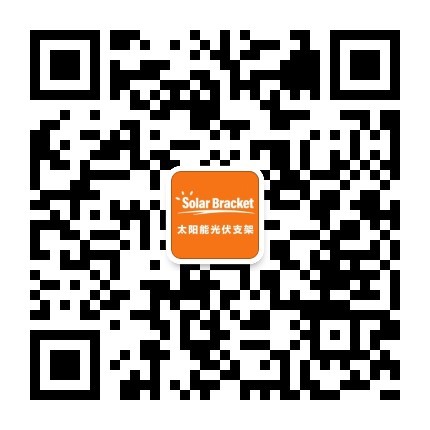







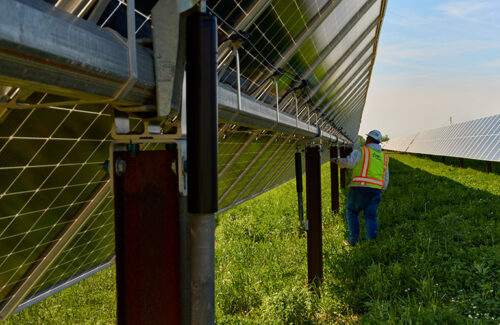
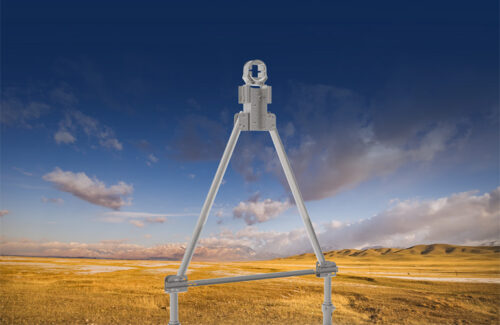
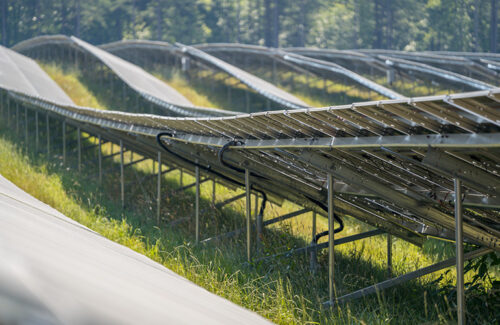

这个是个很好的潜在行业,大型的地面电站越来越多,清洗现在是个必须的切急迫的事情。